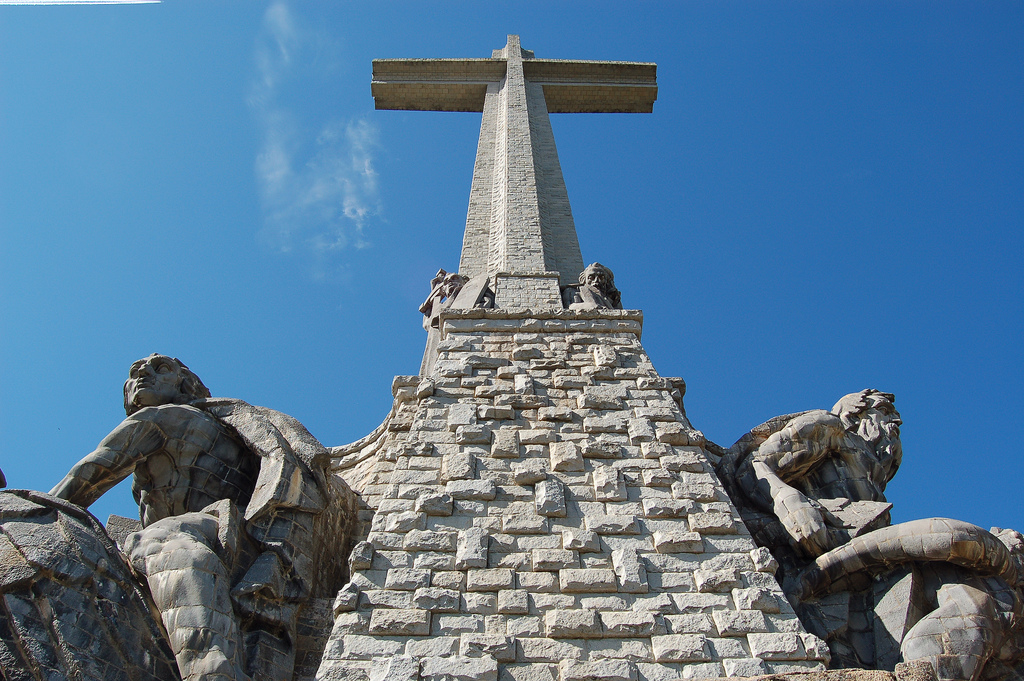
More than 40 years after the death of General Francisco Franco, Spain’s dictator between 1939 and 1975 and the victor of the country’s 1936-39 Civil War, the new Socialist government is confronting a totemic issue –the removal of Franco’s tomb from the Valley of Fallen basilica hewn into rock in the mountains near Madrid and burying him elsewhere.
Unlike other countries, such as Germany, there is still no basic accord in Spain about the country’s authoritarian past and how to deal with it, and hence what to do with Franco’s remains. Leave them be or remove them and turn the state-funded mausoleum, crowned by the tallest stone cross in the world (150 metres high), into a place to commemorate all those who died on both sides of the Civil War?
Defenders of the Valley of the Fallen, which is run by Benedictine monks who live in an adjacent abbey, say it is a monument to reconciliation. Yet this is hard to square with the fact that it was mainly built with the forced labour of Republican political prisoners over an 18-year period (they were promised reduced sentences), and although the mass tombs that line the walls of the basilica contain the dead of both sides (33,847 victims), the Republican dead were brought there without consulting their families, and in some cases against the express wishes of relatives. In April, the remains of four men –from both sides of the Civil War– were authorised to beremoved from the site at the request of their relatives and after a lengthy legal battle.
Not only is Franco buried there, but so is José Antonio Primo de Rivera, the founder of the far right Falange movement, on the other side of the altar to the dictator. Franco is the only person in the Valley of the Fallen who died in his bed: Primo de Rivera was shot by a Republican firing squad in 1936. Every 20 November, the anniversary of Franco’s death, a mass is held, attended by a nostalgic few. Today, more curious tourists today visit the site than nostaligic Francoists.
While the UK and Germany were at war with each other in the 1940s, Spain had come out of a horrendous Civil War, the worst kind of conflict a country can have and the one that leaves the deepest and longest scars. There is no common narrative about that conflict and the ensuing dictatorship, no national historical museum (Germany’s Deutsches Historisches Museum even has a section on the bombing of Gernika by the Luftwaffe) and Spain’s history between 1936 and 1975 is hardly taught in Spain’s schools. It is as if Franco had not existed.
Moreover, when Franco died, Spain’s transition to democracy was engineered by a pact between the reformist right within the regime and the non-violent left istopposition and thus there was no complete and clean break with Francoism. Consensus, after so polarised a past, was very much the watchword and was epitomised by a so-called Pacto de Olvido (literally, Pact of Forgetting), an unspoken and unwritten agreement among political elites to look ahead and not rake over the past. The pact was institutionalised by the 1977 Amnesty Law, which shielded former Franco officials from criminal prosecution. There was nothing resembling a Truth and Reconciliation Commission along the lines, for example, of the one Chile set up shortly after the end of the dictatorship of Augusto Pinochet (an ardent admirer of Franco) in 1990.
Felipe González, the Socialist Prime Minister from 1982 to 1996 was apparently given some friendly advice by a liberal general when he took office and told that it would be unwise to remove the bones of those on the losing side of the Civil War, buried in mass graves, as it might rattle the sabres of Francoist officers. Most of the more than 500 generals still serving at that time had fought on Franco’s side.
A lot has changed since then. Spain has consolidated its democracy, and those who fought in the Civil War or were children at the time account today for a fraction of the population.
It is the grandchildren of the Civil War generation who are moving the Franco issue, which began under José Luis Rodríguez Zapatero, Spain’s last Socialist Prime Minister and whose paternal grandfather, a Republican captain, was executed in 1936 by Franco’s troops. His maternal grandfather fought on Franco’s side, something Rodríguez Zapatero underplayed, which in one family epitomises the Civil War’s complexity. A commission appointed during the last months of Rodríguez Zapatero’s second government drew up a plan in 2011 that proposed removing Franco and Primo de Rivera, and turning the site into a ‘place of reconciled memory’.
The exhumation plan followed Rodríguez Zapatero’s ‘Historical Memory Law’, which provided funding to unearth Republican war graves and called for the removal of Franco statues and street names. The law was bitterly attacked by the centre-right Popular Party (PP) and by Spain’s Roman Catholic Church, which became a pillar of the Franco regime after calling his uprising against the democratically elected Republican government a ‘crusade’. The Church accused the government of ‘opening old wounds’ and ‘threatening the tranquil co-existence’.
When the PP won the election in November 2011 it unsurprisingly shelved Franco’s exhumation on the grounds that it required the ‘consensus’ of all parties. This has been its standard line. The only party against it was and is the PP, which has never been able to bring itself wholeheartedly to condemn Francoism, although it presents itself as a modern conservative party.
The transition, among a new generation of left-wing political activists, has almost become a dirty word for, among other things, failing to sweep away the last vestiges of the dictatorship. This has fed into the so-called ‘black legend’ image of Spain as an intolerant country.
It is easy to criticise Spain’s sui generis transition from the comfortable perspective of today and for disregarding the ‘transitional justice movement’, which promotes coming to terms with the past as part of the process of democratisation. The movement’s origins lie in the Nuremberg trials after the Second World War, but it did not really get moving until the late 1980s (after Franco died).
There is no-one-size-fits-all for democratic transitions and nor is there a consensus on what coming to terms with the past entails. Spain took a pragmatic approach, and it worked. The proof is that Spain’s democratic regime is the first one to enjoy a significant degree of stability in the country’s turbulent history. This is perhaps the best condemnation of Franco, who believed that Spaniards were incapable of co-existing in a democracy.
Removing his tomb is no longer a divisive issue. A greater challenge is to forge an accord over the past and a common narrative.


